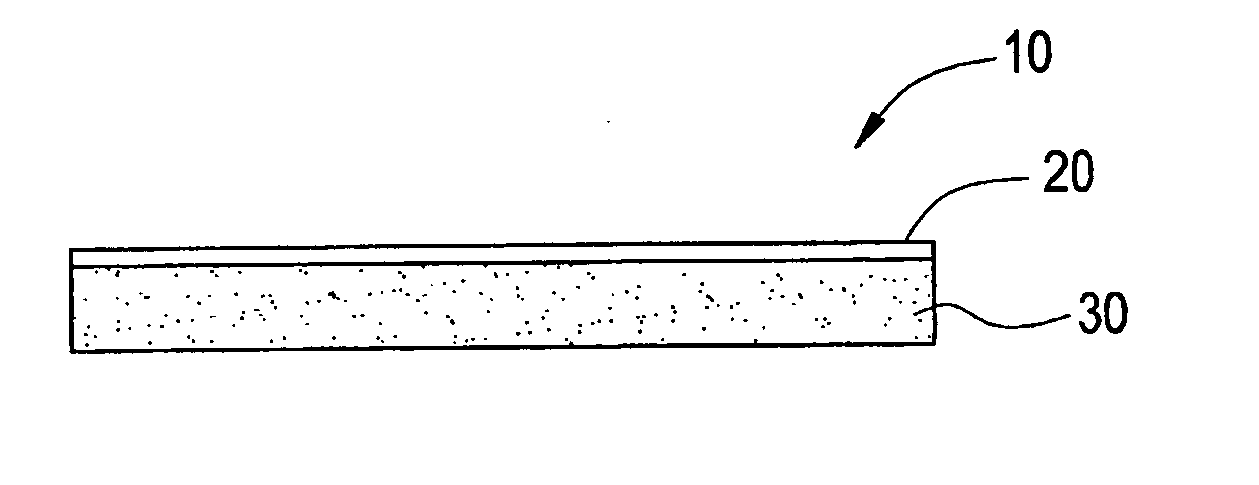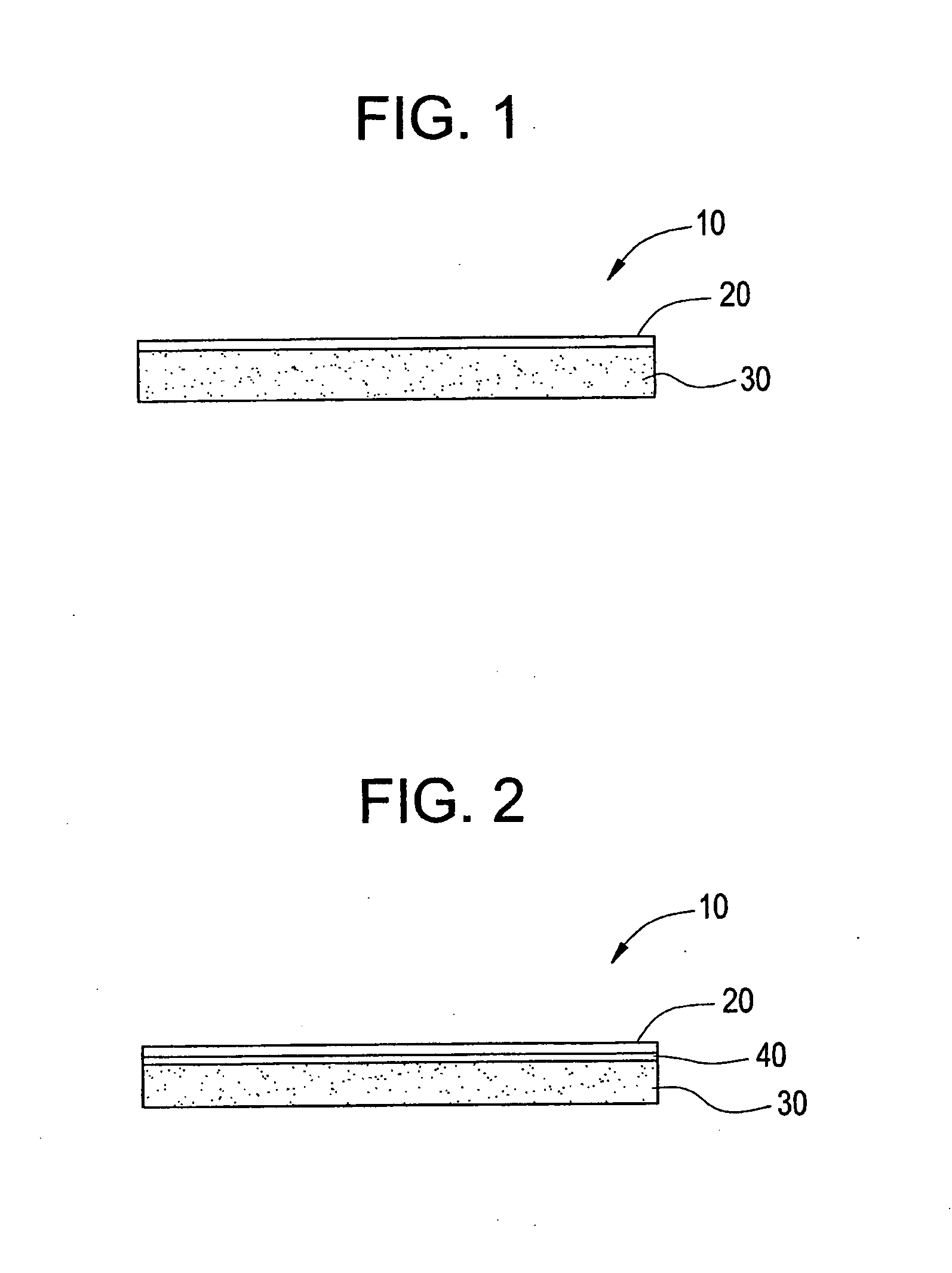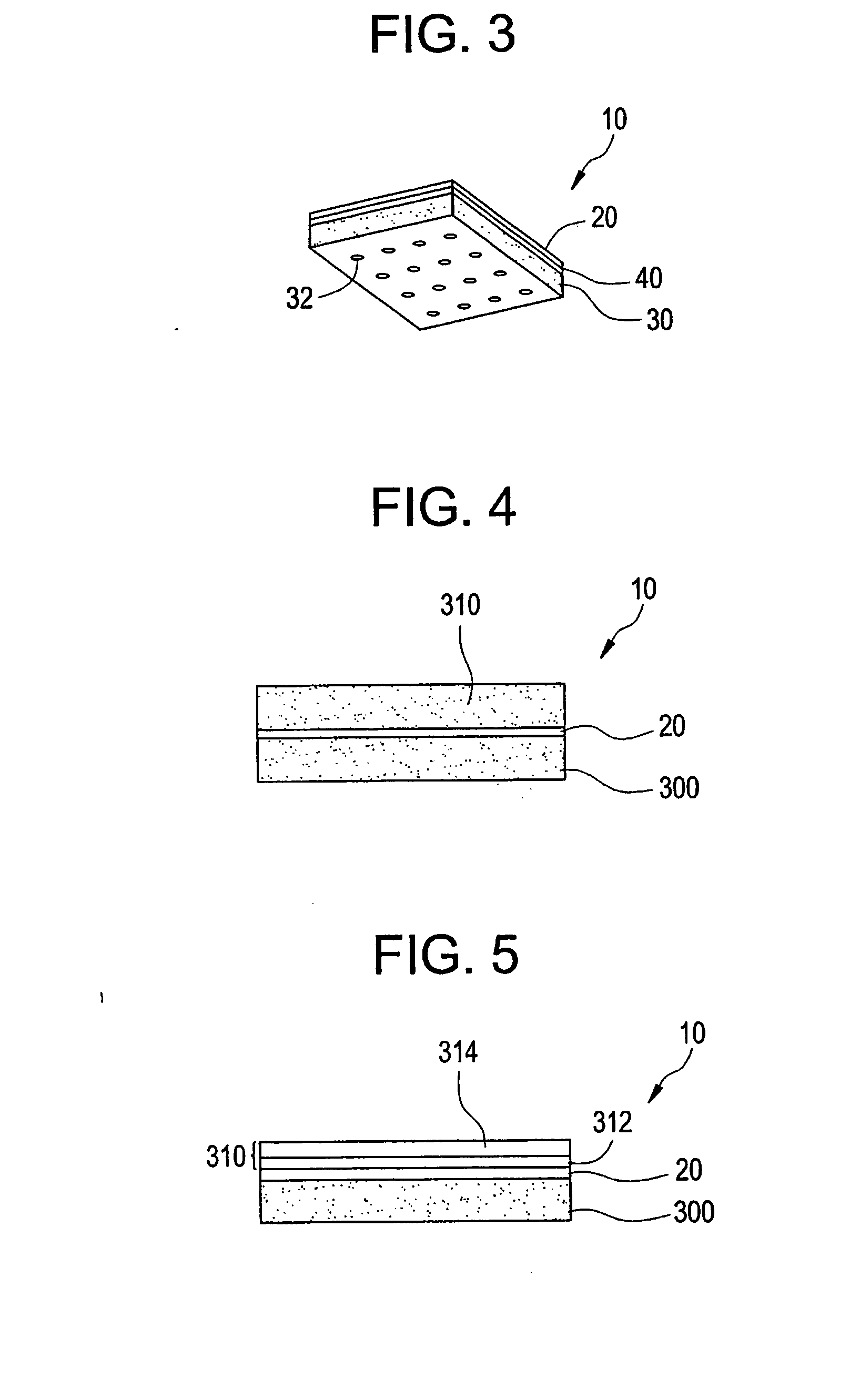Glass product for use in ultra-thin glass display applications
a technology of glass substrate and ultra-thin glass, which is applied in the field of glass substrate products, can solve the problems of increasing the weight of the larger display, affecting the fusion glass thinner, and affecting the fusion glass manufacturing technology
- Summary
- Abstract
- Description
- Claims
- Application Information
AI Technical Summary
Benefits of technology
Problems solved by technology
Method used
Image
Examples
Embodiment Construction
[0024] Reference will now be made in detail to the present exemplary embodiments of the invention, examples of which are illustrated in the accompanying drawings. Wherever possible, the same reference numbers will be used throughout the drawings to refer to the same or like parts. An exemplary embodiment of the substrate product of the present invention is shown in FIG. 1, and is designated generally throughout by reference numeral 10.
[0025] In accordance with the invention, the present invention is directed to a substrate product for use in the manufacture of active matrix liquid crystal display panels. The product includes a display substrate suitable for use as a display panel. The display substrate has a thickness less than or equal to 0.4 mm, a composition that is substantially alkali free, and a surface smoothness that allows the direct formation of thin-film transistors thereon without a prior processing step of polishing and / or grinding. The product also includes at least o...
PUM
| Property | Measurement | Unit |
|---|---|---|
| strain point | aaaaa | aaaaa |
| thickness | aaaaa | aaaaa |
| temperature | aaaaa | aaaaa |
Abstract
Description
Claims
Application Information
 Login to View More
Login to View More - R&D
- Intellectual Property
- Life Sciences
- Materials
- Tech Scout
- Unparalleled Data Quality
- Higher Quality Content
- 60% Fewer Hallucinations
Browse by: Latest US Patents, China's latest patents, Technical Efficacy Thesaurus, Application Domain, Technology Topic, Popular Technical Reports.
© 2025 PatSnap. All rights reserved.Legal|Privacy policy|Modern Slavery Act Transparency Statement|Sitemap|About US| Contact US: help@patsnap.com



